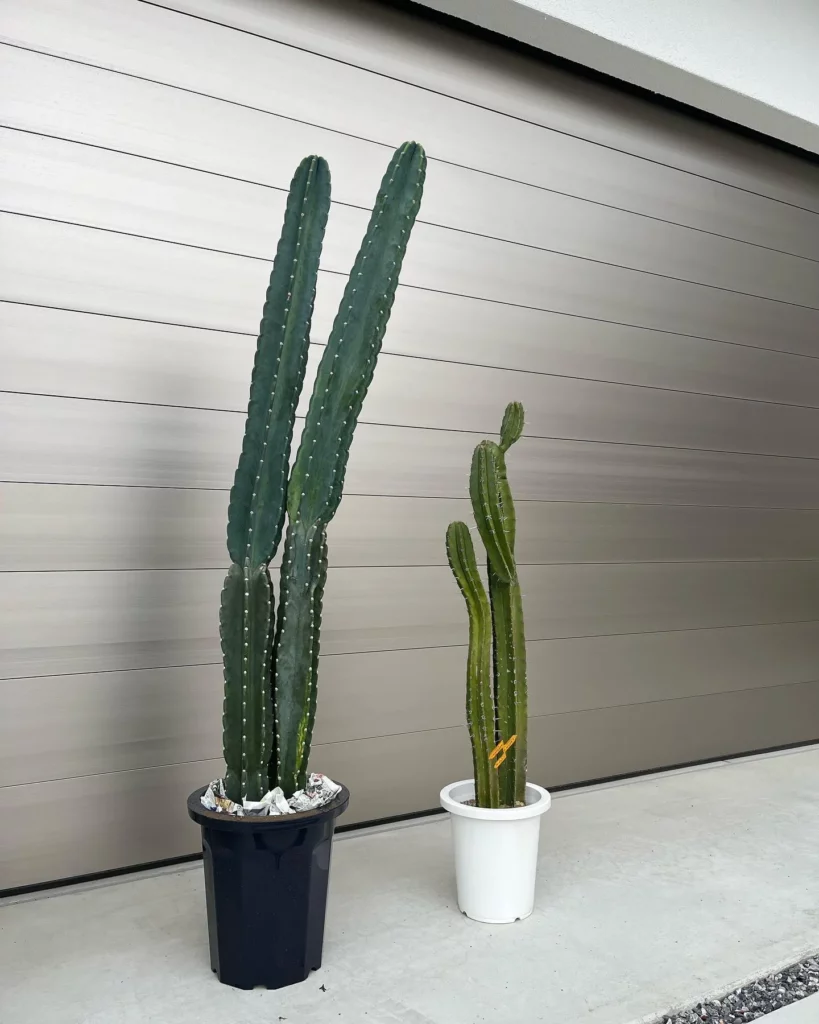The Candelabra Cactus, also known as Euphorbia ingens, is a unique succulent plant that stands out with its striking appearance. Although it’s not actually a cactus, it closely resembles one. This plant features columnar, upright stems with 4-6 ridges and sharp spines. These stems can grow branches from the side, giving each Candelabra Cactus a distinct shape.
Key Takeaways:
- Provide the Candelabra Cactus with full sun to partial shade.
- Propagate the Candelabra Cactus through stem cuttings.
Candelabra Cactus Appearance
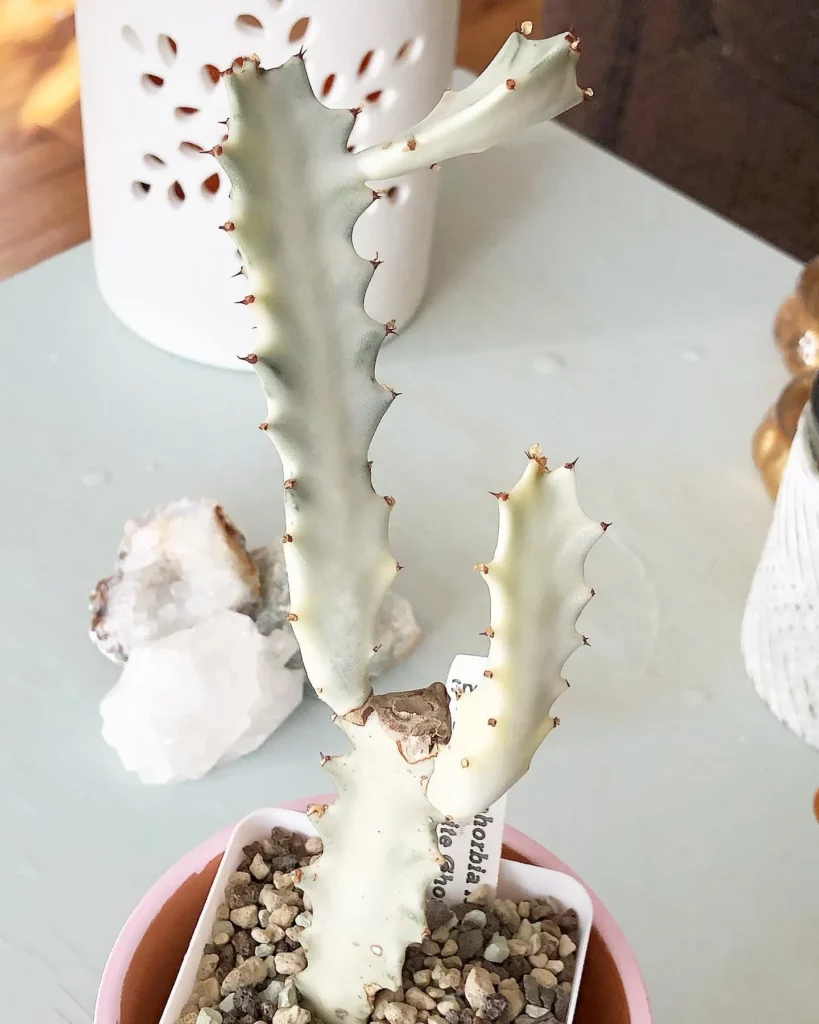
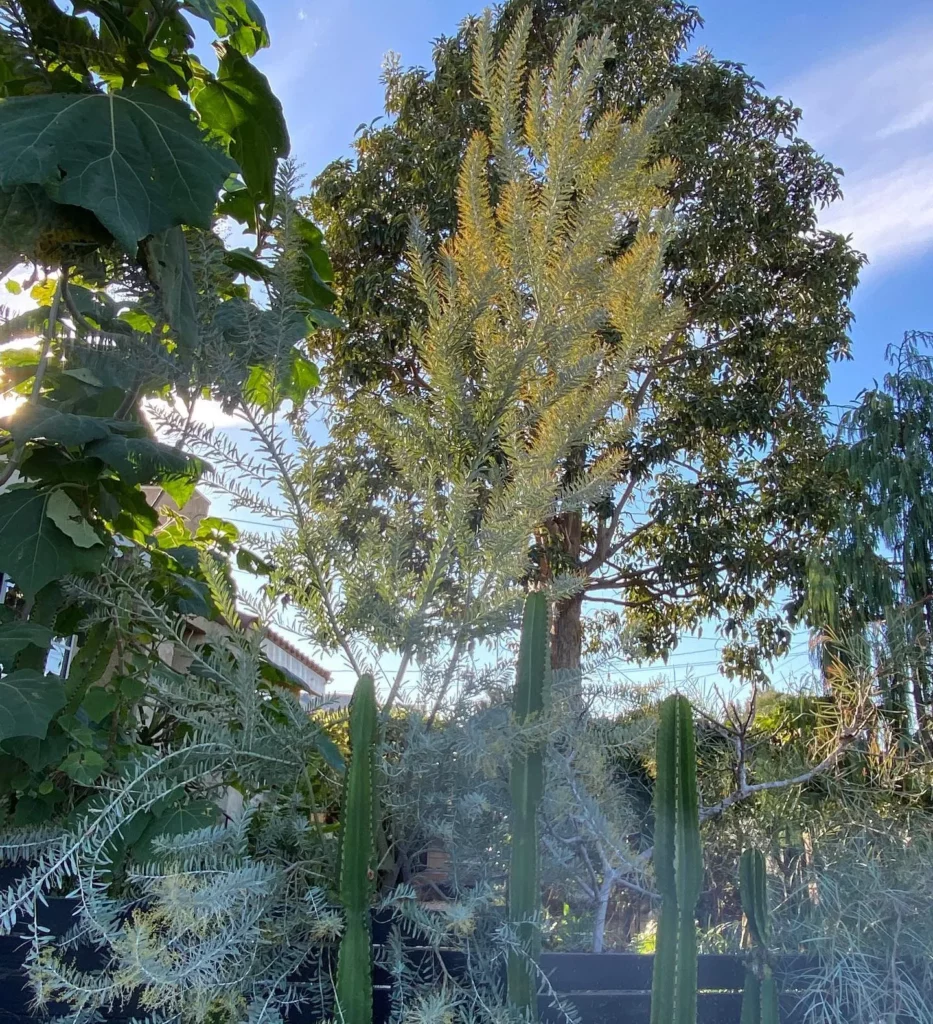
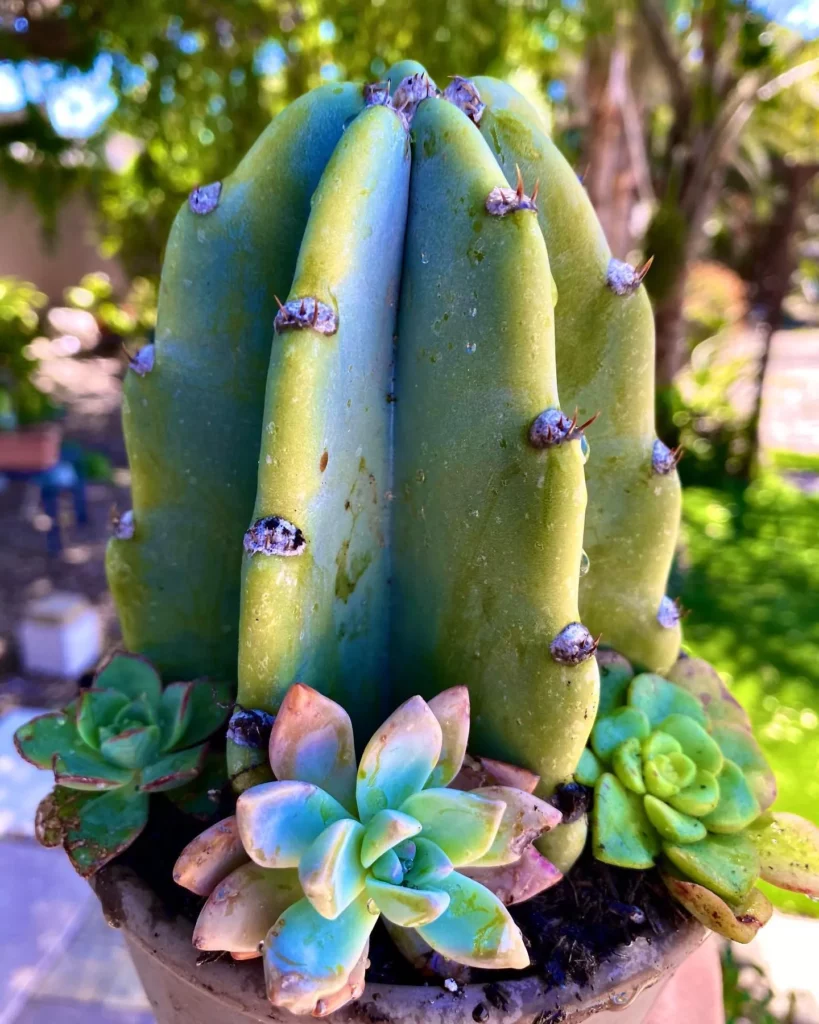
When young, the stems of the Candelabra Cactus are green, but as the plant matures, they take on a pale grayish tinge. One of the most captivating features of this plant is its flowers. The Candelabra Cactus produces small yellow-green flowers that bloom along the ridges of the stems. These flowers not only add beauty to the plant but also attract pollinators.
As the Candelabra Cactus reaches its full potential, it can grow to be a massive tree-like structure, towering up to 30 feet in height or even more. Its impressive size and unique appearance make it a standout addition to any landscape or indoor plant collection.
No products found.
Candelabra Cactus Light Requirements
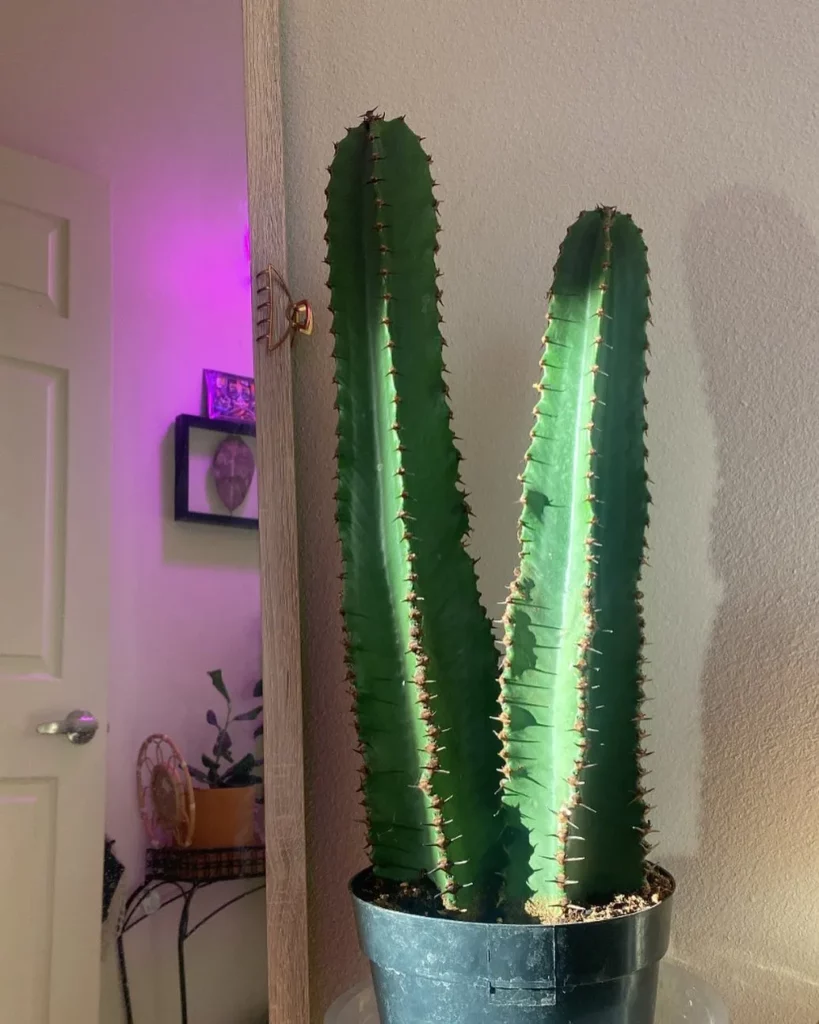
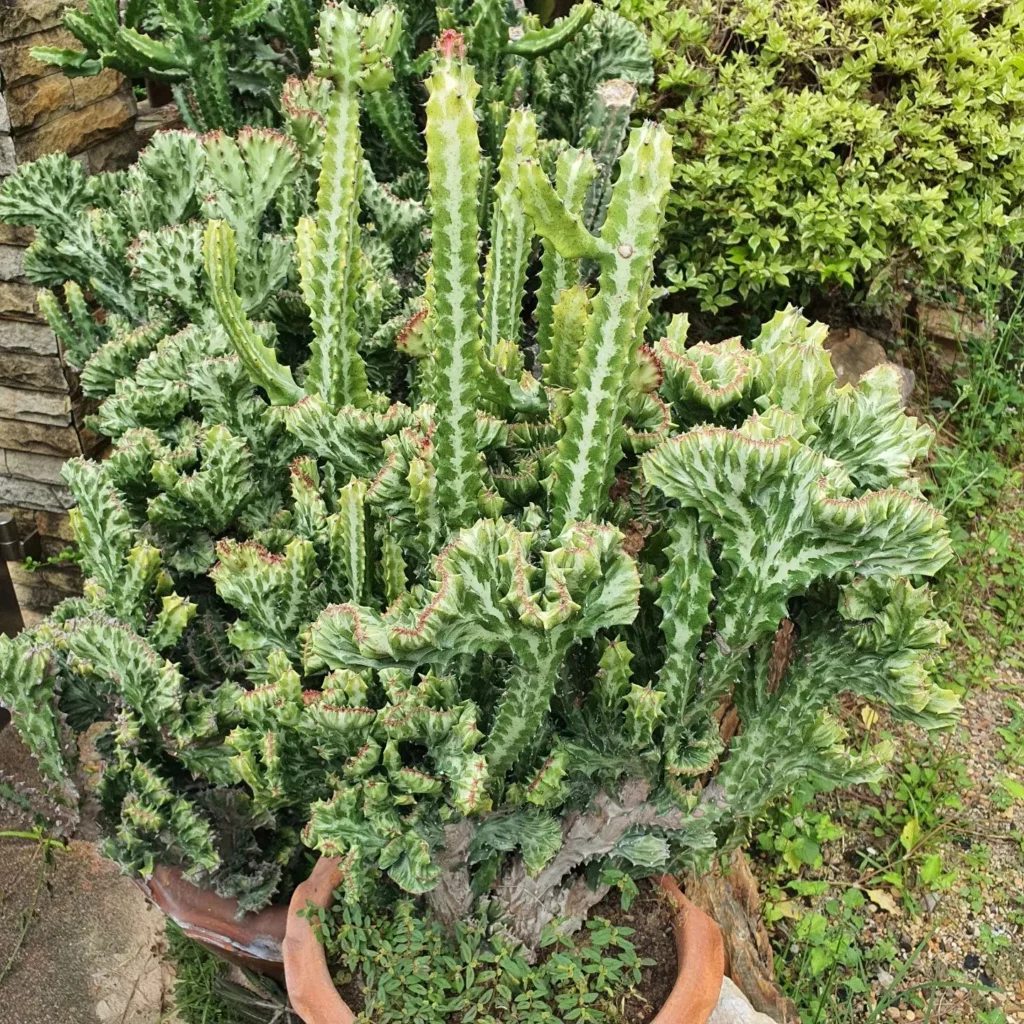
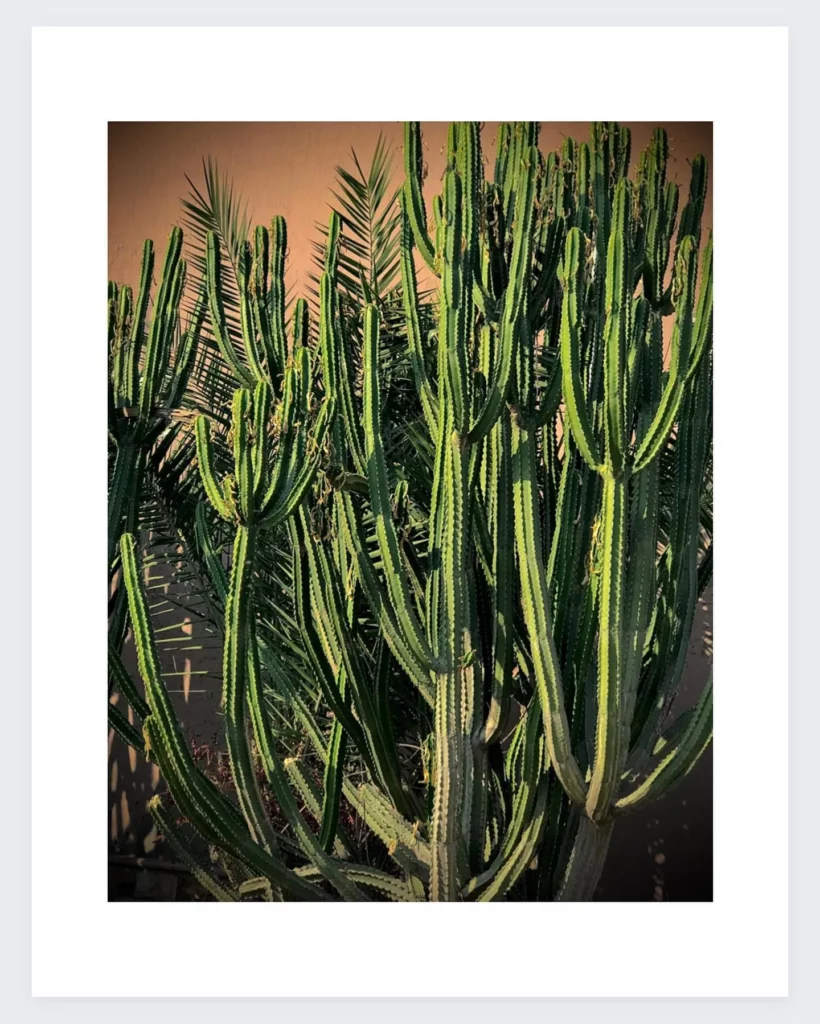
Providing the right amount of light is crucial for the health and well-being of your Candelabra Cactus. This unique succulent thrives in bright, dry conditions and requires full sun to partial shade. To ensure optimal growth, it’s best to place your cactus in south-facing windows or areas that receive ample sunlight. East- and west-facing windows can also provide suitable light, but caution should be exercised when placing it in north-facing windows with limited sunlight.
When positioning your Candelabra Cactus, it’s important to consider its light requirements. This plant needs sufficient light to sustain photosynthesis and maintain its vibrant green color. Without adequate light, your cactus may become weak and leggy, compromising its overall health. By providing the right light conditions, you can encourage robust growth and a visually stunning display.
Light Requirements Checklist:
- Place the Candelabra Cactus in a location that receives full sun to partial shade.
- South-facing windows offer the ideal amount of sunlight.
- East- and west-facing windows can also provide suitable light conditions.
- Be cautious with north-facing windows, as they may not provide enough sunlight.
Candelabra Cactus Watering
Proper watering is essential for the health of your Candelabra Cactus. As a succulent plant, it can tolerate long periods without water, but overwatering can be detrimental. Here are some key points to keep in mind when watering your Candelabra Cactus:
- Frequency: During the summer months, it is recommended to water your Candelabra Cactus more frequently, but still no more than once every two weeks. This will encourage new growth. In the winter, watering can be less frequent, as occasional watering is sufficient.
- Allow soil to dry: It is important to allow the soil to completely dry out between waterings. This will help prevent overwatering and the development of root rot. Check the moisture level by inserting your finger into the soil. If it feels dry up to a few inches deep, it is time to water.
- Deep watering: When it is time to water, give your Candelabra Cactus a thorough soak. Water until it flows out of the drainage holes at the bottom of the pot. This ensures that the water reaches all the roots and allows excess water to drain away.
- Water quality: Use room temperature water when watering your Candelabra Cactus. It is best to use filtered or distilled water to avoid the buildup of minerals in the soil. If using tap water, let it sit for 24 hours to allow chlorine and fluoride to dissipate.
Candelabra Cactus Soil and Potting

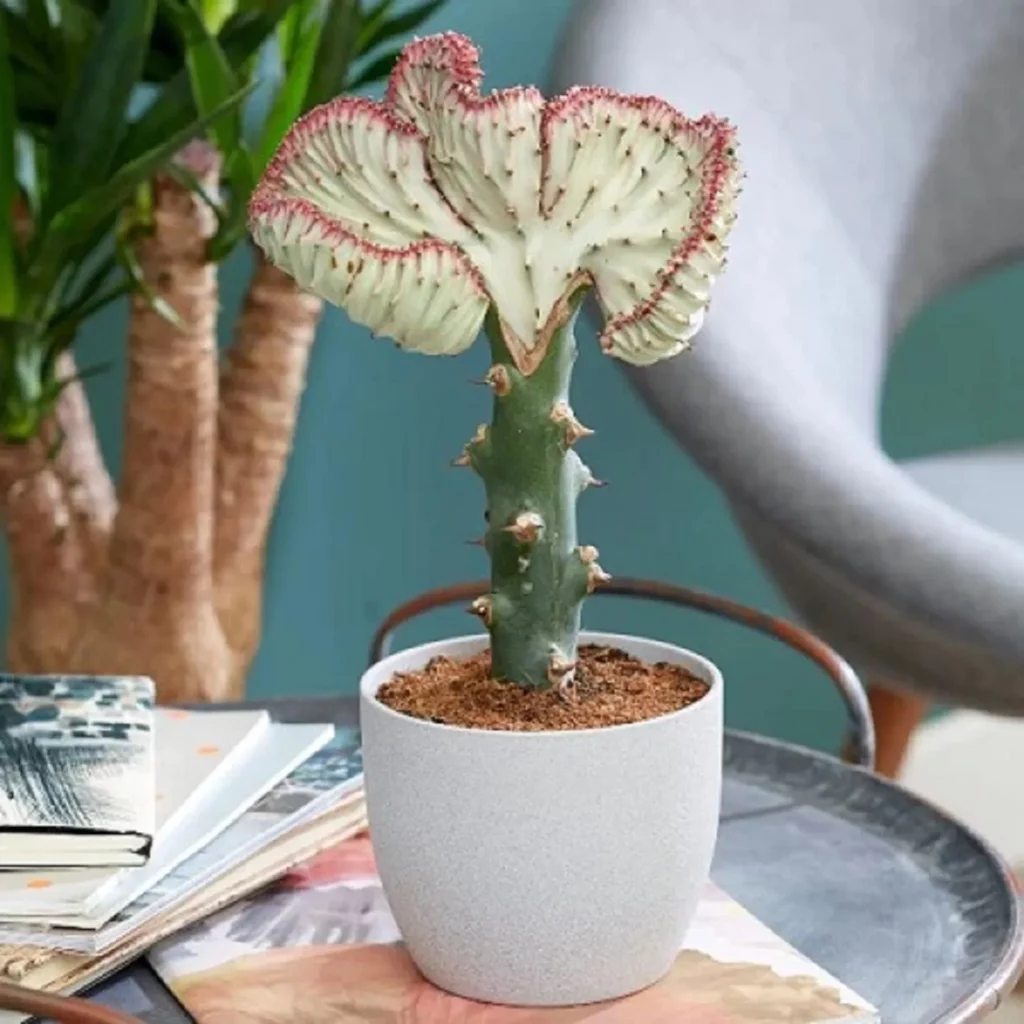

Proper soil and potting are essential for the healthy growth of your Candelabra Cactus. This unique succulent requires loose, well-draining soil that is lightly fertile. To ensure optimal drainage, it is recommended to use a cactus or succulent-specific potting mix. These mixes are specially formulated to provide the right balance of nutrients and moisture retention without the risk of waterlogged soil.
When potting your Candelabra Cactus, choose a container that has drainage holes at the bottom. This will prevent water from sitting in the soil and potentially causing root rot. Select a pot that is slightly larger than the current size of your cactus, allowing enough room for growth. Avoid pots that are too large, as excess soil can hold too much water and lead to overwatering.
Repotting is generally not necessary unless your cactus becomes top-heavy or outgrows its current container. If repotting is required, carefully remove the cactus from its current pot, gently loosen the roots, and place it in the new pot with fresh potting mix. Be cautious when handling the cactus, as its spines contain a poisonous sap. Wearing gloves is recommended to protect yourself from any potential irritation or allergies.
- Use loose, well-draining soil that is lightly fertile.
- Opt for a cactus or succulent-specific potting mix.
- Select a pot with drainage holes to avoid waterlogged soil.
- Choose a pot slightly larger than the current size of your cactus.
- Repot only when necessary, being mindful of the cactus’s spines.
Candelabra Cactus Fertilizing
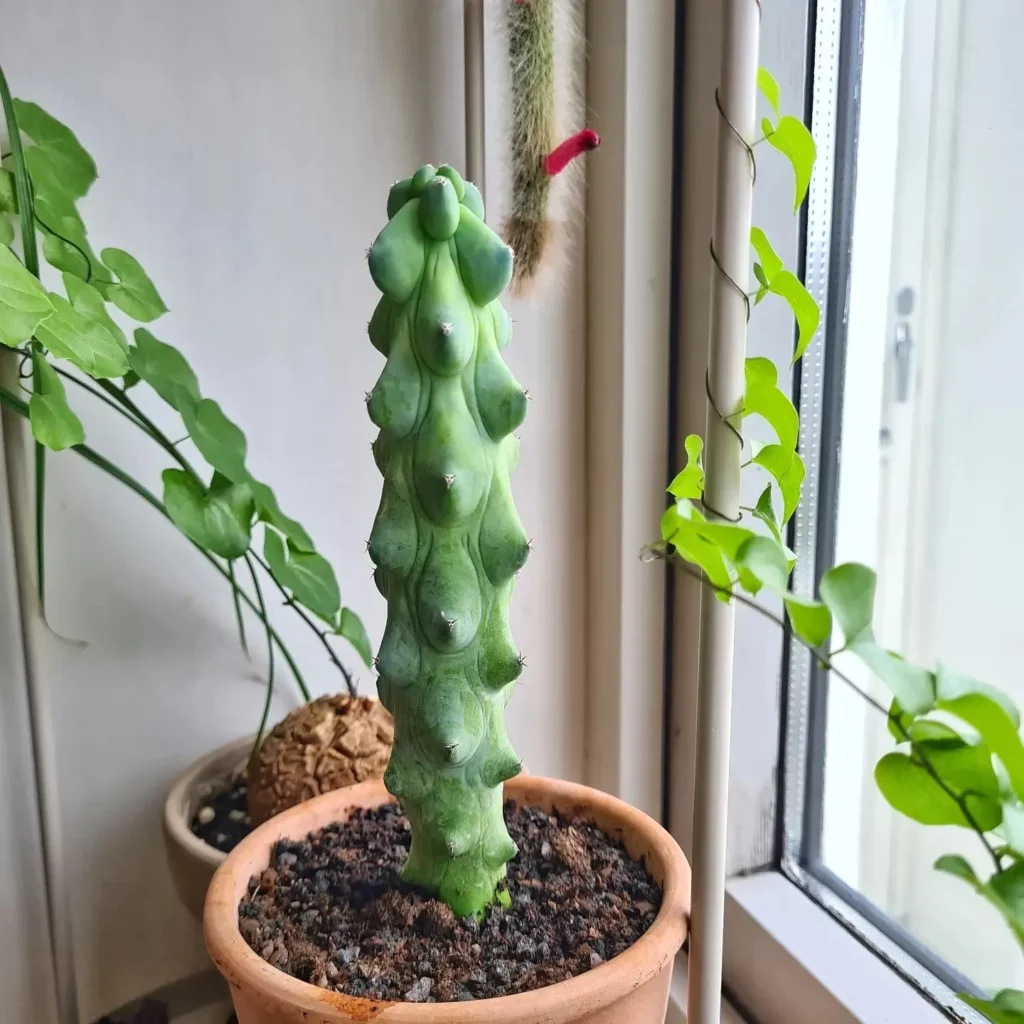
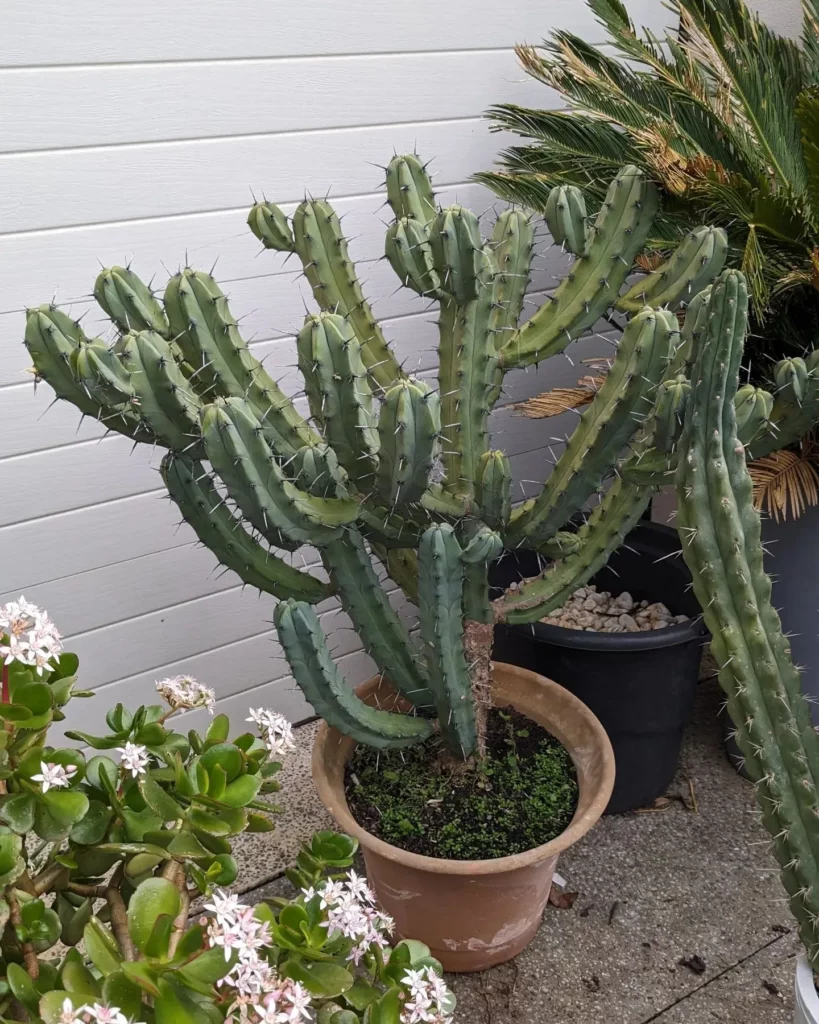
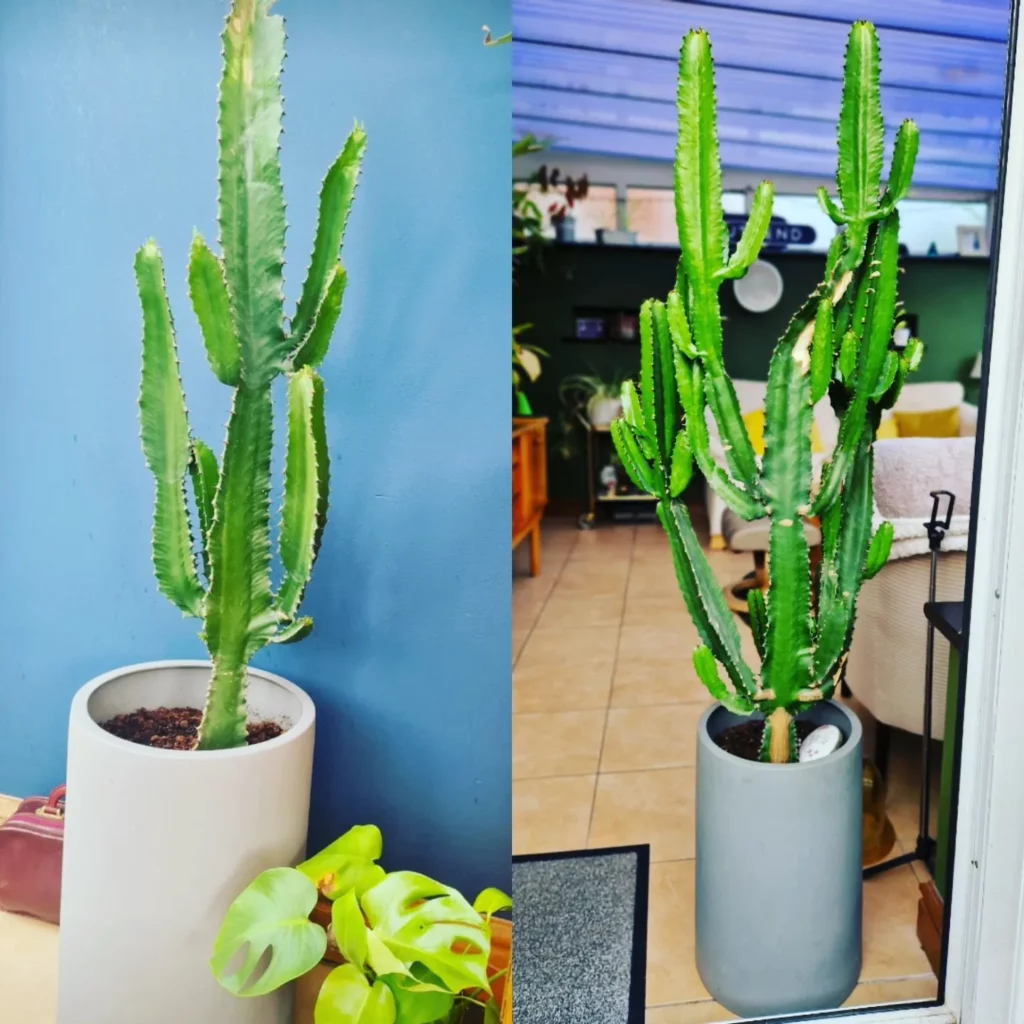
Proper fertilizing is essential for the healthy growth of your Candelabra Cactus. While this plant does not require frequent fertilization, a slow-release balanced fertilizer specifically formulated for cacti and succulents can be beneficial. Applying fertilizer once or twice a year during the growing season can provide the necessary nutrients for optimal growth.
When choosing a fertilizer, look for one with a balanced NPK ratio, such as 10-10-10 or 14-14-14. These numbers represent the percentages of nitrogen (N), phosphorus (P), and potassium (K) in the fertilizer. A balanced ratio ensures that the Candelabra Cactus receives all the nutrients it needs without any excessive amounts.
To fertilize your Candelabra Cactus, follow the instructions on the fertilizer packaging carefully. Apply the fertilizer to the soil around the base of the plant, avoiding direct contact with the stems or spines. It is important not to over-fertilize, as this can lead to nutrient burn and damage the plant.
Remember that fertilizing is just one component of care for your Candelabra Cactus. Providing it with adequate sunlight, well-draining soil, and proper watering are equally important for its overall health and vigor. With the right care, your Candelabra Cactus will thrive and continue to impress with its unique appearance.
Candelabra Cactus Propagation

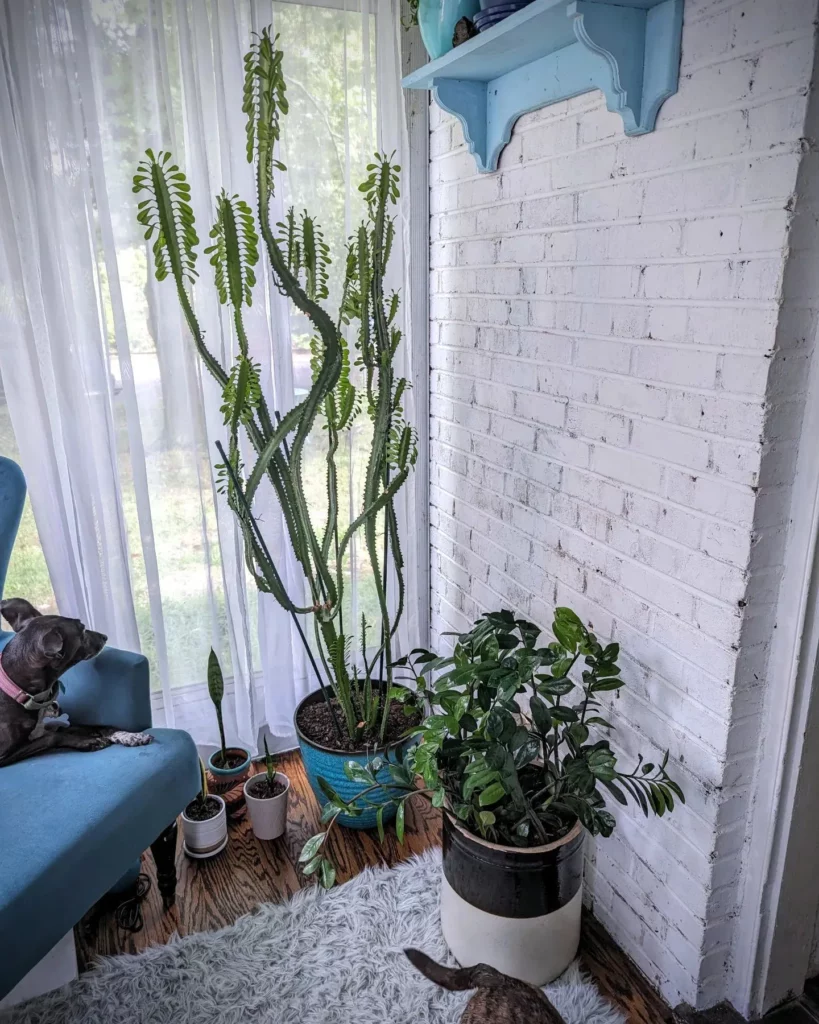
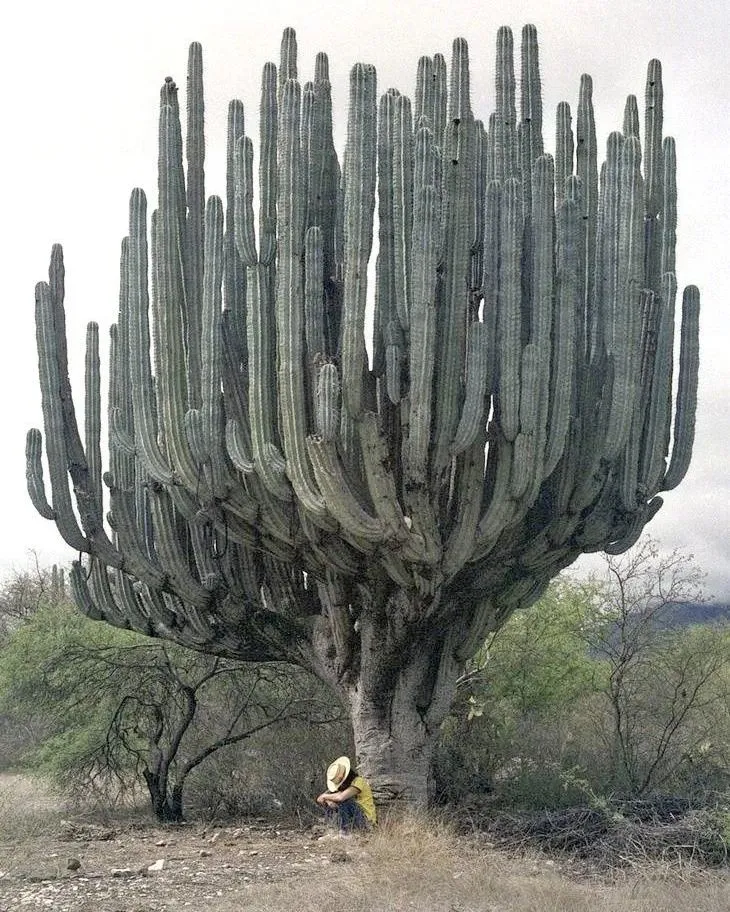
Propagating the Candelabra Cactus is an exciting way to expand your collection or share this stunning plant with others. Follow these simple steps to successfully propagate your Candelabra Cactus:
- Choose a healthy stem: Select a stem with side branches from an older Candelabra Cactus plant. It’s best to wear gloves while handling the plant as it contains poisonous sap.
- Allow the cutting to dry: After taking the stem cutting, allow it to dry and callus for a few days. This helps prevent rot and infection.
- Plant in well-draining soil: Prepare a well-draining growing medium using cactus or succulent-specific potting mix. Plant the cutting in the soil, ensuring it has proper support.
- Provide optimal conditions: Place the cutting in a sunny location with good air circulation. Avoid overwatering and water the cutting sparingly, similar to the parent plant.
Candelabra Cactus Growth and Development
The Candelabra Cactus has a remarkable growth rate under optimal conditions. With the right care, this succulent can reach heights of 30 feet or more, resembling a majestic tree in your landscape. However, it’s important to note that achieving the full height potential of the Candelabra Cactus can take up to 20 years. Patience is key when growing this stunning plant.
To promote healthy growth and development, provide your Candelabra Cactus with plenty of bright, direct sunlight. This plant thrives in full sun to partial shade, so be sure to position it in an area that receives ample sunlight throughout the day. South-facing windows and sunny spots in your garden are ideal locations.
Proper watering is crucial for the growth and development of the Candelabra Cactus. While it is a succulent and can tolerate long periods without water, it’s important to water it occasionally to encourage new growth. Water the plant once every two weeks during the summer months, allowing the soil to dry out completely between waterings. In winter, reduce the frequency of watering, as the plant enters a period of dormancy.
- The Candelabra Cactus has a fast growth rate but can take up to 20 years to reach its full height.
- Provide the plant with bright, direct sunlight to promote healthy growth.
- Water the Candelabra Cactus occasionally, allowing the soil to dry out completely between waterings.
Candelabra Cactus Pests and Diseases
While the Candelabra Cactus is generally resistant to pests, it may occasionally encounter some unwanted visitors. The most common pest that can affect this plant is mealybugs. These small, white insects can suck the sap from the cactus, causing damage to the plant. To get rid of mealybugs, you can use insecticidal soap or rubbing alcohol to remove them. It’s important to wear gloves when handling the cactus, as its spines contain a poisonous, white sap.
In addition to pests, the Candelabra Cactus can also be susceptible to fungal diseases. The most common ones include root rot and dry rot. These diseases are often caused by overwatering or poor drainage, which leads to the accumulation of excess moisture around the roots. To prevent these issues, it’s crucial to allow the soil to completely dry out between waterings and ensure that the pot has proper drainage holes.
The Candelabra Cactus can also be affected by damage from harsh weather conditions. Strong winds, extreme temperatures, and excessive sunlight can cause stress and damage to the plant. Providing some shade during the hottest part of the day and protecting the cactus from harsh weather elements can help prevent these issues.
Here are some tips to prevent pests and diseases:
- Regularly inspect your Candelabra Cactus for signs of pests, such as mealybugs, and take action immediately if you spot any.
- Avoid overwatering the plant and ensure that the soil has good drainage.
- Place the cactus in a location that provides adequate sunlight without exposing it to extreme heat or cold.
- Keep the cactus clean by gently wiping off any dust or debris that accumulates on its stems.
- Provide good air circulation around the plant to prevent the development of fungal diseases.
Candelabra Cactus Landscape Tips
If you’re looking to add a unique and eye-catching element to your landscape, the Candelabra Cactus is an excellent choice. Whether you plant it directly in the ground or keep it in a large pot, this majestic succulent will surely become the focal point of your outdoor space. Here are some landscape tips to help you make the most of your Candelabra Cactus:
- Choose a suitable location: The Candelabra Cactus thrives in full sun to partial shade, so select a spot in your garden that receives ample sunlight. If you’re growing it indoors, place it near a south-facing window or in a room with plenty of natural light.
- Exercise caution when handling: The spines of the Candelabra Cactus contain poisonous sap, so it’s important to wear gloves and handle the plant with care. Keep it out of reach of children and pets to avoid any accidental injuries.
- Pot or plant in well-draining soil: Use a cactus or succulent-specific potting mix when planting your Candelabra Cactus in a container. If planting directly in the ground, ensure that the soil is loose and well-draining to prevent waterlogged roots.
- Consider its size: Keep in mind that the Candelabra Cactus can grow up to 30 feet tall, resembling a tree. Make sure to give it enough space to reach its full potential without obstructing other plants or structures in your landscape.
Candelabra Cactus Origin
The Candelabra Cactus, also known as Euphorbia ingens, is native to the dry and warm regions of southern and southeastern parts of Africa. This unique succulent plant is found in countries such as Somalia, Angola, and South Africa, where it has adapted to survive in hot and arid conditions. Its natural habitat consists of desert-like landscapes, making it well-suited for similar environments in cultivation.
The plant’s ability to thrive in harsh conditions is due to its remarkable water storage capabilities and drought tolerance. Its columnar, upright stems, with 4-6 ridges and sharp spines, serve as both a defense mechanism against herbivores and a means of reducing water loss through transpiration.
Whether you’re growing the Candelabra Cactus outdoors or indoors, understanding its origin can provide valuable insights into its care requirements. By replicating its natural habitat as closely as possible, you can ensure the best chances of success in cultivating this stunning and resilient succulent.
Candelabra Cactus Care Guide Summary
To care for your Candelabra Cactus, it’s important to provide it with the right conditions. This stunning plant thrives in full sun to partial shade, so make sure to place it in a spot that receives plenty of bright, dry light. South-facing windows or areas with full sun are ideal, but east- and west-facing windows can also work well. Just keep in mind that it may struggle in north-facing windows with limited sunlight.
When it comes to watering, the Candelabra Cactus is a succulent that can tolerate long periods without water. During the summer, you can water it more frequently, but still no more than once every two weeks. In the winter, occasional watering is sufficient. Just be sure to allow the soil to completely dry out between waterings to avoid overwatering and root rot.
The Candelabra Cactus requires loose, well-draining soil that is lightly fertile. It’s best to use a cactus or succulent-specific potting mix to ensure proper drainage. When potting, choose a container with drainage holes to prevent waterlogged soil. Repotting is usually not necessary unless the cactus becomes top-heavy.
In terms of propagation, you can easily grow new Candelabra Cactus plants from stem cuttings. Just remember to use gloves to protect yourself from the sap, which can be poisonous. Allow the cuttings to dry and callus for a few days before planting them in a well-draining growing medium. Keep the cuttings in a sunny and dry location, and water them as you would the parent plant.
FAQ
Is the Candelabra Cactus actually a cactus?
No, the Candelabra Cactus is not a cactus, but a succulent plant from Africa.
How tall can the Candelabra Cactus grow?
The Candelabra Cactus can grow up to 30 feet or more, resembling a tree rather than a cactus.
Where should I place my Candelabra Cactus?
The Candelabra Cactus thrives in full sun to partial shade. It should be placed in south-facing windows or areas that receive full sun. East- and west-facing windows can also be suitable.
How often should I water my Candelabra Cactus?
The Candelabra Cactus is a succulent plant that can tolerate long periods without water. In summer, watering once every two weeks can encourage new growth. In winter, occasional watering is sufficient.
What kind of soil should I use for my Candelabra Cactus?
The Candelabra Cactus requires loose, well-draining soil. It is important to use a cactus or succulent-specific potting mix to ensure proper drainage.
How often should I fertilize my Candelabra Cactus?
The Candelabra Cactus does not require frequent fertilizing. A slow-release, balanced fertilizer formulated for cacti and succulents can be applied once or twice a year during the growing season.
How can I propagate my Candelabra Cactus?
The Candelabra Cactus can be propagated through stem cuttings. Take a cutting from an older plant with side branches, allow it to dry and callus for a few days, then plant it in a well-draining growing medium.
How long does it take for the Candelabra Cactus to reach its full height?
It can take up to 20 years for the Candelabra Cactus to reach its full height of 30 feet or more.
What pests and diseases can affect my Candelabra Cactus?
The Candelabra Cactus is generally resistant to pests, but it may occasionally be affected by mealybugs. It can also be susceptible to fungal diseases like root rot and dry rot. Providing good air circulation can help prevent these issues.
Can I plant my Candelabra Cactus in the ground?
Yes, the Candelabra Cactus can be planted in the ground or kept in large pots. It is often used as a focal point in landscapes due to its size and unique appearance.
Where is the Candelabra Cactus native to?
The Candelabra Cactus is native to dry and warm areas of southern and southeastern parts of Africa, including countries like Somalia, Angola, and South Africa.
What are the key points to remember for caring for a Candelabra Cactus?
Provide your Candelabra Cactus with full sun to partial shade, well-draining soil, and occasional deep watering. Proper care and maintenance can prevent pests and diseases and allow the plant to thrive.

